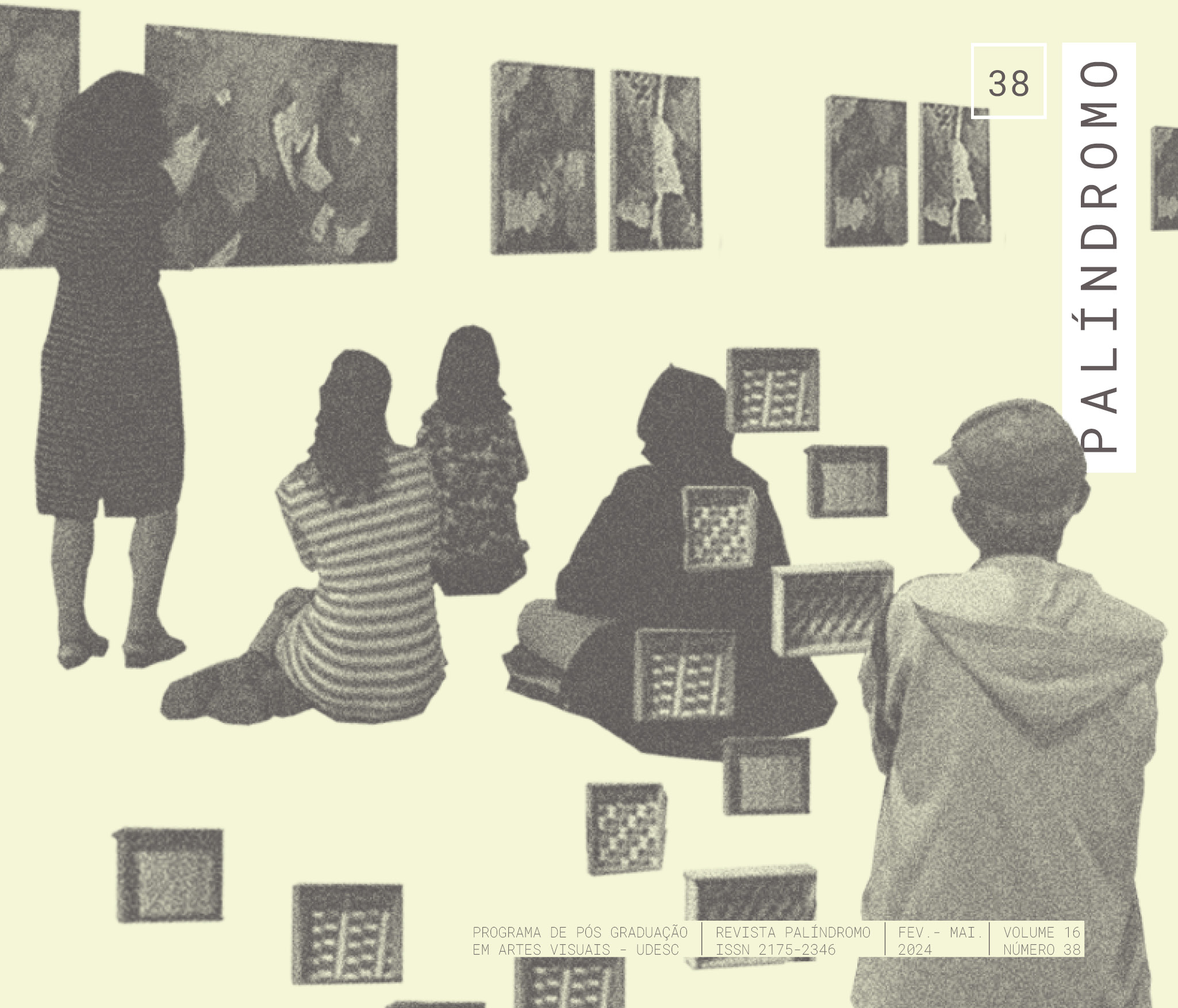Untying knots: the importance of historical and social contextualization for the enjoyment of textile art
DOI:
https://doi.org/10.5965/2175234616382024e0015Keywords:
textile art, crafts, tapestryAbstract
The present work aims to provide an overview of the evolution of perceptions regarding textile art over time, in the search for clarifying certain notions that still influence the judgment of works located in this category. The importance of the historical and social contextualization of a given practice was discussed – in this case, artistic production involving textile fibers – so that it can be enjoyed to its full potential. The procedure adopted was bibliographical research. An approximation of artistic practice involving textile fibers with handicrafts and feminine activities was identified. This association began during the Middle Ages and intensified from the Renaissance onwards, coinciding with the idea of the artist as a creative genius in counterpoint to the figure of the craftsman. Concomitant to this process, the ideal of women as housewives, whose activities were restricted to the domestic environment, became associated with textile practices. Subsequently, modernist canons made it difficult to accept textile works as art objects, precisely because of their association with crafts and a feminine context. From the 1960s and throughout the 1970s, eminently in North America, the work of several artists who used the textile medium contributed to fostering discussion around the artistic practice studied and made it possible for the traditional defining concepts of work of art were questioned.
Downloads
References
AUTHER, Elissa. String, felt and thread: the hierarchy of art and craft in American art. Minneapolis: University of Minnesota Press, 2010.
CAUQUELIN, Anne. Arte contemporânea: uma introdução. São Paulo: Martins Fontes, 2005.
CIRILO, José; MELLO, Júlia. Artes da fibra. Vitória: Universidade Federal do Espírito Santo, Secretaria de Ensino a Distância, 2019. Disponível em: https://acervo.sead.ufes.br/arquivos/pdf-artes-fibra.pdf. Acesso em: 2 nov. 2023.
CONSTANTINE, Mildred; LARSEN, Jack. Beyond craft: the art fabric. New York: Van Nostrand Reinhold, 1972.
GRIPA, Carolina Bouvie. A memória que se tece: o centro gaúcho da tapeçaria contemporânea. 2017. Trabalho de conclusão de curso (Bacharelado em Artes Visuais) - Universidade Federal do Rio Grande do Sul, Porto Alegre, 2017.
MEGGS, P. História do design gráfico. São Paulo: Cosac Naify, 2009.
OLIVEIRA, Natália. Tramas contemporâneas na América Latina. Belo Horizonte: EBA-UFMG, 2022. Disponível em: https://repositorio.ufmg.br/bitstream/1843/51616/1/Tramas%20contempor%C3%A2neas%20na%20Am%C3%A9rica%20Latina.pdf. Acesso em: 2 nov. 2023
PARKER, Rozsika. The subversive stitch: embroidery and the making of the feminine. Nova Iorque: I. B. Tauris, 2010.
PEREIRA, Carolina; TRINCHÃO, Gláucia. O bordado como ferramenta educacional no brasil entre os séculos XIX e XX. Revista História da Educação (Online), v. 25, 2021. Disponível em: https://seer.ufrgs.br/index.php/asphe/article/view/101244/pdf. Acesso em: 30 mar. 2023. DOI: https://doi.org/10.1590/2236-3459/101244
PEVSNER, N. Os pioneiros do desenho moderno: de William Morris a Walter Gropius. São Paulo: Martins Fontes, 2002.
SHINNER, L. La invención del arte. Barcelona: Ediciones Paidós Ibérica, 2004.
SIMIONI, Ana Paula Cavalcanti. Descosturando gêneros: da feminização das artes têxteis às subversões contemporâneas. In: OLIVEIRA, Ana Claudia de; CASTILHO, Katia (org.). Corpo e moda: por uma compreensão do contemporâneo. Barueri, SP: Estação das Letras e Cores Editora, 2008.
SORKIN, Jenni. Tactile begnnings. In: DESNESCHES, L.; KITINICK, A.; KLEIN, A.; SORKIN, J. Barbara Kasten: Stages. Zürich: JRP|Ringier, 2015, p. 148-169. Disponível em: https://www.academia.edu/25680726/Tactile_Beginnings_Barbara_Kasten_2015_. Acesso em: 2 nov. 2023
WARD, Lucina. Soft Sculpture. Parkes, ACT: National Gallery of Australia, 2009. Disponível em: nga.gov.au/Exhibition/softsculpture/pdf/softsculptureevents.pdf. Acesso em: 30. jun. 2021.
Downloads
Published
How to Cite
Issue
Section
License
Copyright (c) 2024 Elisa Rocha Bueno, Júlia Lasry Benchimol Lanza, Joedy Luciana Barros Marins Bamonte

This work is licensed under a Creative Commons Attribution 4.0 International License.
COPYRIGHT STATEMENT
The articles published by the magazine are free to use, intended for academic and non-commercial applications. Copyright is all assigned to the magazine. The articles whose authors are identified represent the expression from the point of view of their authors and not the official position of Palíndromo Magazine. The author (s) commits to whenever they publish material referring to the article published in Palíndromo mention this publication as follows:
This article was originally published by Palíndromo magazine in its volume (place the volume), number (place the number) in the year of (place the year) and can be accessed at: http://www.revistas.udesc.br/index.php/palindromo


